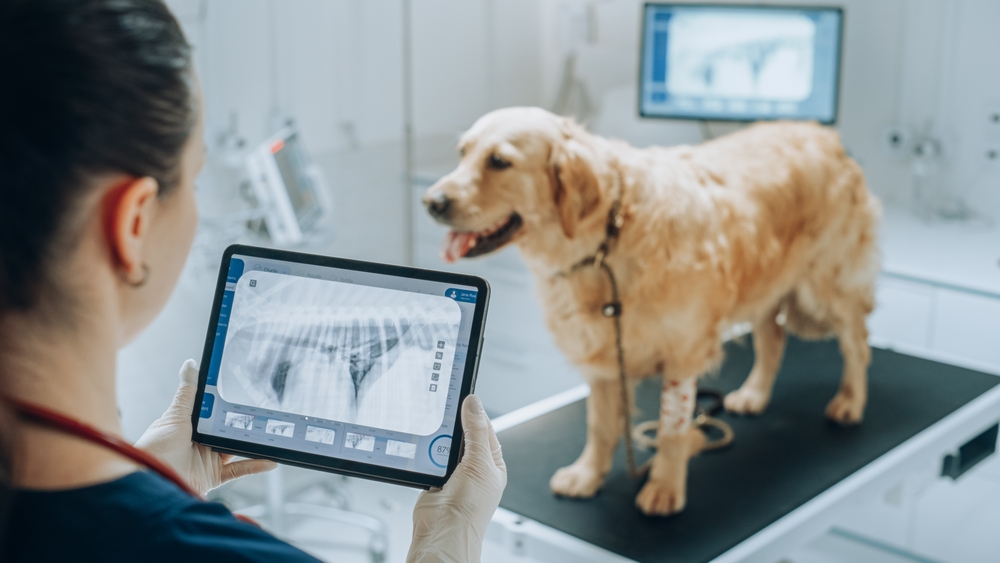
When it comes to the health of our pets, advanced diagnostic imaging plays a crucial role in providing accurate and timely diagnoses. Veterinary medicine has seen tremendous advancements in diagnostic imaging techniques, allowing veterinarians to visualize and understand the internal structures of animals.
Importance of Advanced Diagnostic Imaging in Veterinary Medicine
Advanced diagnostic imaging has revolutionized the field of veterinary medicine by providing veterinarians with a non-invasive and highly accurate method to diagnose various medical conditions in animals. These imaging techniques allow veterinarians to visualize the internal organs, bones, and soft tissues of animals, enabling them to detect abnormalities, identify injuries, and diagnose diseases. This not only helps in providing the best possible care for our pets but also aids in making informed decisions about their treatment plans.
Additionally, advanced diagnostic imaging plays a vital role in monitoring the progress of treatments and surgeries. It allows veterinarians to assess the effectiveness of a particular treatment and make necessary adjustments if needed. It provides a baseline for future comparisons, allowing veterinarians to track the changes in an animal's condition over time.
Types of Advanced Diagnostic Imaging in Veterinary Medicine
X-rays
X-rays, also known as radiographs, are one of the most commonly used diagnostic imaging techniques in veterinary medicine. They use electromagnetic radiation to create images of the internal structures of the animal's body. X-rays are particularly useful in diagnosing fractures, identifying foreign objects, and evaluating the condition of the lungs and heart.
Ultrasound
Ultrasound is another commonly used imaging technique in veterinary medicine. It uses high-frequency sound waves to create real-time images of the internal structures of the animal's body. Ultrasound is particularly useful in visualizing soft tissues, such as organs, blood vessels, and muscles.
Ultrasound is often used to diagnose conditions such as pregnancy, tumors, cysts, and bladder stones. It can also be used to evaluate the condition of the heart, liver, kidneys, and other organs.
Echocardiograms
Echocardiography is a specialized form of ultrasound that focuses on the heart and its surrounding structures. It is a valuable tool in diagnosing and monitoring heart conditions in animals. Echocardiograms provide detailed images of the heart's chambers, valves, and blood flow patterns, allowing veterinarians to assess the overall function of the heart.
Echocardiograms are used to diagnose conditions such as heart murmurs, congenital heart defects, heart failure, and pericardial effusion. They can also be used to monitor the progress of treatment for heart conditions and guide surgical interventions.
MRI Scans
Magnetic Resonance Imaging (MRI) is a powerful diagnostic imaging technique that uses a magnetic field and radio waves to create detailed images of the internal structures of the animal's body. MRI scans provide unparalleled clarity and resolution, making them particularly useful in visualizing soft tissues, such as the brain, spinal cord, and joints.
MRI scans are often used to diagnose conditions such as brain tumors, spinal cord injuries, joint disorders, and soft tissue injuries. They can also be used to detect abnormalities in the organs, blood vessels, and nerves.
CT Scans
Computed Tomography (CT) scans, also known as CAT scans, are a specialized form of X-ray imaging that provides cross-sectional images of the animal's body. CT scans use X-rays and advanced computer algorithms to create detailed images of the internal structures, allowing veterinarians to view the body in slices.
CT scans are used to diagnose conditions such as tumors, bone fractures, lung diseases, and abdominal disorders. They can also be used to guide surgical interventions and evaluate the extent of trauma or injuries.
Choosing the Right Diagnostic Imaging Method for Your Pet
When it comes to choosing the right diagnostic imaging method for your pet, it is essential to consult with your veterinarian. The choice of imaging modality depends on various factors, such as the suspected condition, the area of the body to be imaged, and the availability of equipment. Your veterinarian will consider these factors and recommend the most appropriate imaging technique for your pet's specific needs.
At True Animal Vet, we utilize in-house X-rays, ultrasound, and echocardiograms to diagnose and treat most medical conditions in animals. If your pet requires MRI scans or CT scans we can refer those imaging procedures out for appropriate and timely care.
If you have any concerns about your pet's health or are in need of advanced diagnostic imaging, consult with our veterinarian to ensure the best possible care for your pet. Visit True Animal Vet at our clinic in The Woodlands, Texas (77381). Call (281) 867-5968 or text (281) 916-3282 to schedule an appointment today.










